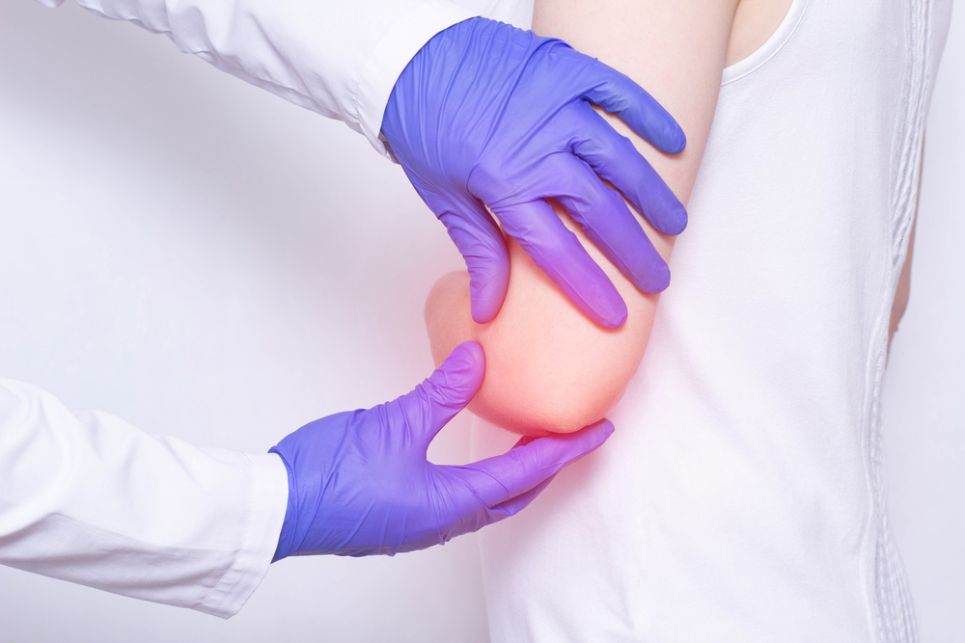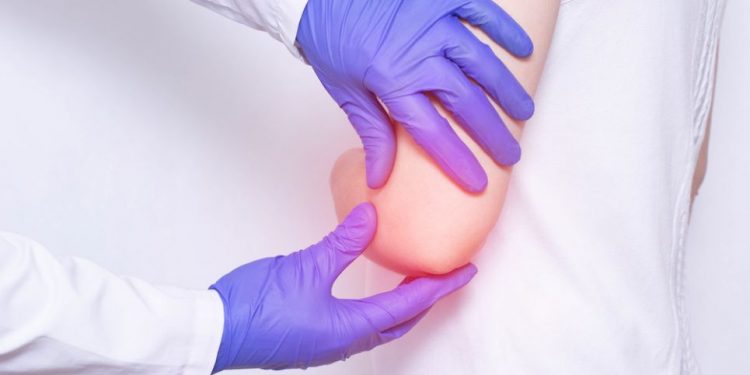Epicondylitis symptoms include pain and tenderness on the outside of the elbow. These are the result of overuse of the tendons that attach to the outer part of the elbow, called the epicondyle. This tendon damage is often the result of repetitive activities, including tennis and other racquet sports. Other occupations and recreational sports can also lead to lateral epicondylitis, which is also called tennis elbow or lateral elbow pain (LEP).
In most cases of LEP, the condition develops over time. Symptoms usually start off mild and slowly worsen over weeks or months. They typically involve pain in the inner or outer elbow, at times accompanied by weakness of the hand grip and difficulty picking up objects. Other symptoms may include a burning or painful sensation, tremors or shaking in the hand, and numbness or tingling in the arm.
Diagnosis of LEP involves a history of the condition, and a physical examination of the elbow joint. This exam is performed by your doctor, who may use a ‘look, feel, and move’ approach.
Your doctor will ask you to flex your wrist and fingers against resistance. This test can help to pinpoint the point of irritation in your elbow, as well as identifying the affected tendons.
The extensor carpi radialis brevis and the extensor digitorum communis tendons anchor your muscles to your bones in the arm, and they extend your wrist, as well. When the attachment site weakens, you have a painful elbow that limits your ability to perform daily tasks.

X-rays and MRI scans may be ordered by your doctor to confirm that the problem is in your elbow joint, and not elsewhere in your body. In some cases, a herniated disc or arthritis of the neck can cause radiating arm pain.
Treatment of LEP can involve resting your elbow, using anti-inflammatory medication, avoiding the activity that causes the symptoms, stretching, physical therapy, and sometimes steroid injections into the tendons in the elbow. If these treatments do not relieve your pain, surgery may be needed.
Common symptoms of LEP include pain and swelling in the elbow, especially when you bend your wrist or extend your arm. It is also common to have a dull, aching pain in the front of your elbow or behind your forearm.
The most important factor in treating LEP is reducing the amount of stress placed on the tendons and the elbow. This can be done by modifying your activities, changing your work-related positions and using a tennis elbow strap or counterforce brace to support the elbow.
Your orthopedic doctor can recommend an exercise program to stretch your forearm tendons. These exercises are typically performed with the elbow bent, then with the arm in full extension, and may take several weeks to complete.
Occasionally, injections of cortisone into the tendons can relieve symptoms in the short term. However, it is generally discouraged to inject cortisone into an unhealthy tendon.
If the elbow pain does not respond to nonsurgical treatments after six to twelve months, your orthopedic doctor may recommend surgery. Surgical procedures include arthroscopic (a small incision) or open surgery, which is often successful and offers long-term relief for most patients.









